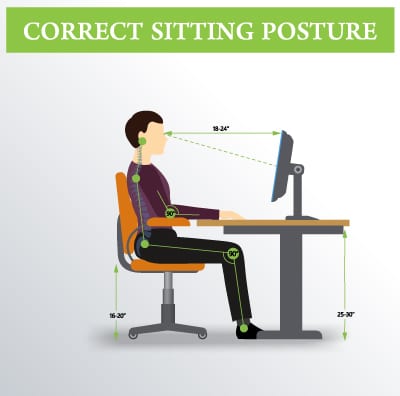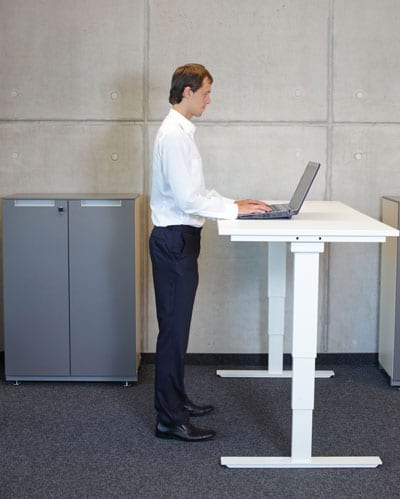The average office worker will spend 1,700 hours a year sitting in their office chair. That’s over six hours per day! But just because you spend your days in an office chair doesn’t mean you have to deal with back, neck, and wrist pain. By maintaining proper posture and making small adjustments to your workspace, you can improve your quality of life. Here are some basic tips to get you started.
Use an Adjustable Office Chair
Having an ergonomic office chair with back support is essential, giving you a solid foundation for an experience that matches your body’s unique needs. The right high-quality ergonomic office chair will provide support and adjustability in key areas, preventing aches, pains, and strains while keeping you comfortable throughout your work day.
Lumbar support is an often overlooked necessity. Poor lumbar support can lead to low back pain, tight hip flexors, and even contribute to sciatica. The right office chair will provide strong lumbar support that fits your back. In a pinch, a lumbar pillow can be a temporary solution for poor lumbar support, but should never replace a good chair.
Sit at Optimal Screen Height
 The top of your computer monitor should always be at or slightly below eye level, and an arm’s length away. This keeps you from straining your neck by leaning too far up or down or craning your neck, causing stiffness and pain in your neck and back.
The top of your computer monitor should always be at or slightly below eye level, and an arm’s length away. This keeps you from straining your neck by leaning too far up or down or craning your neck, causing stiffness and pain in your neck and back.
Height from the floor is extremely important but is often sacrificed when making other adjustments, such as screen height. Your chair should be adjusted to keep your knees bent at 90 degrees and your feet flat on the floor. A chair that is too high or too low can cause strain to your knees, or cause you to lean in your chair, putting a strain on the back and neck. An office chair cushion can provide immediate relief for a chair that is too low.
Properly Position Your Mouse and Keyboard
While typing or using your mouse, your hands and wrists should be straight and at an even level with your elbows. This helps prevent strains, as well as potential chronic issues like carpal tunnel and tennis elbow. Having a chair with adjustable armrests can help you maintain comfort and proper elbow and wrist posture.
Make Your Workspace Accessible
Adjust your workspace to limit turning your neck or twisting in your chair. Frequently turning your neck to check a calendar, or twisting to grab a folder can contribute to muscles aches and strains. By keeping necessary items in front of you, or by turning your chair to reach them, you can reduce your risk of injury.
Consider The Benefits of Standing
 Healthy office lifestyles don’t end with ergonomic office chairs and proper posture. Making adjustments to how you work can drastically improve your experience as well.
Healthy office lifestyles don’t end with ergonomic office chairs and proper posture. Making adjustments to how you work can drastically improve your experience as well.
Sitting for long periods of time is linked to health problems like diabetes, heart disease, and weight gain. Standing for just a few extra hours per day can improve your health, give you more energy, and make work more fun and engaging.
If your work requires being in front of a computer or otherwise tied to a desk for long periods of time, sit-stand desks are a great way to stay comfortable, healthy, and flexible in the office.
While standing desks force you to stay on your feet all day, convertible sit/stand desks give you the flexibility to switch quickly and hassle-free. Many offices are switching to convertible desks to give their employees a more active and dynamic office experience that contributes to a healthy lifestyle and can change with each employee’s individual needs.
For help finding an ergonomic solution that is right for you, talk to an office furniture expert at Everett Office Furniture.